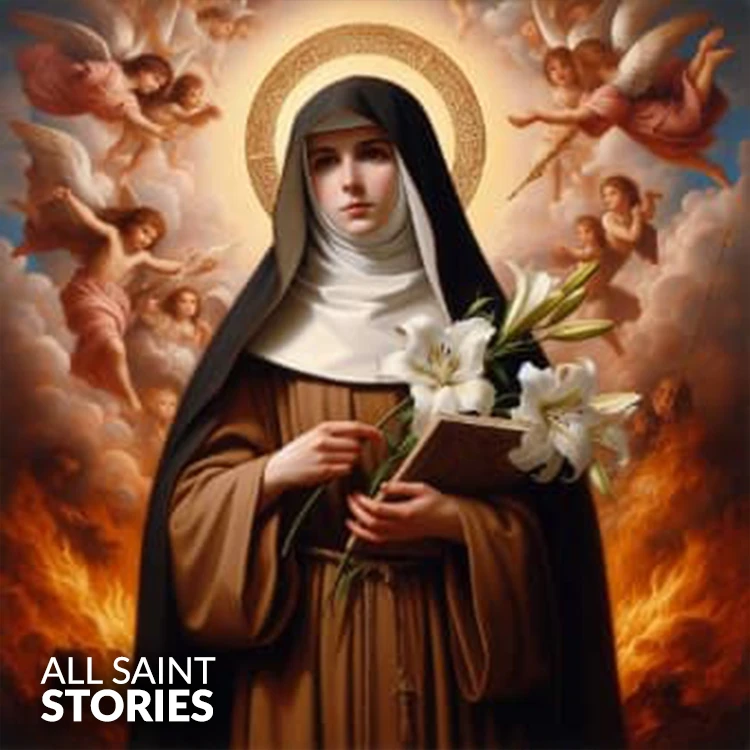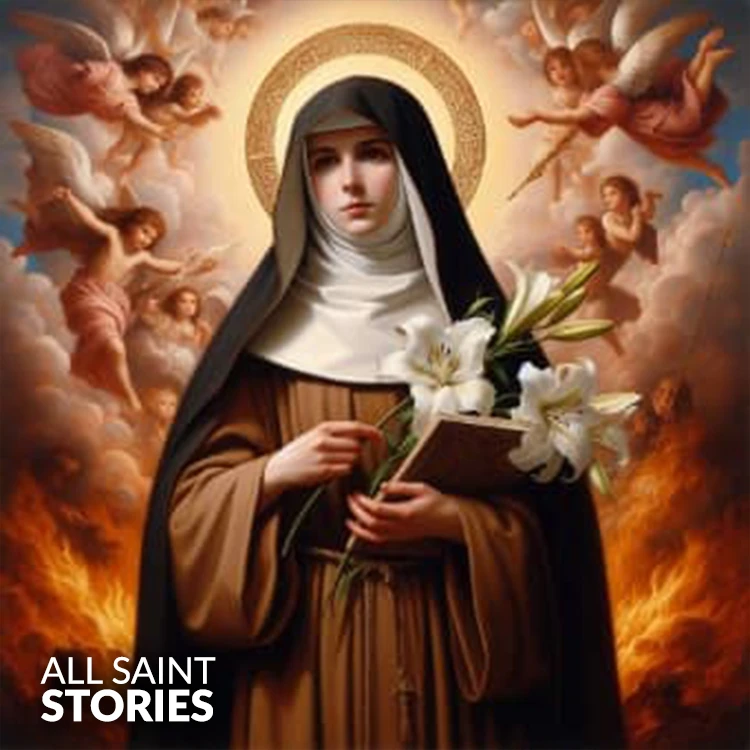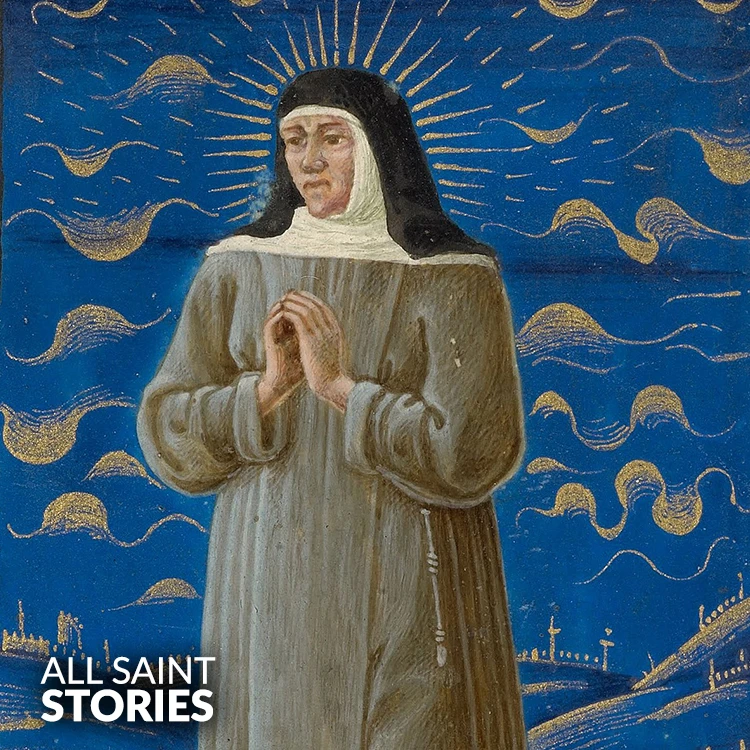St. Catherine of Bologna, you who devoted your life to God with humility and love, help us to live in faith and purity. Intercede for us, that we may grow in holiness and draw closer to the divine presence. Guide us in our daily struggles, and through your prayers, may we find strength and grace to follow the path of Christ. Amen.
ST. CATHERINE OF BOLOGNA
ST. CATHERINE OF BOLOGNA

St. Catherine of Bologna was a Franciscan nun, mystic, writer, and artist. She was known for her visions of Christ and the Virgin Mary, as well as her deep devotion to prayer and the Eucharist. She authored spiritual writings and painted religious artworks. Her body remains incorrupt in Bologna.
St. Catherine of Bologna was born as Caterina de’ Vigri on September 8, 1413, in Bologna, Italy, into an aristocratic family. She was raised in the court of the Marquis of Ferrara, where she received an exceptional education in Latin, literature, music, and art. Despite her privileged upbringing, she longed for a life dedicated to God and service.
At the age of 14, Catherine left court life and joined a group of Franciscan tertiaries in Ferrara, embracing a simple and disciplined life. She excelled in prayer and spiritual studies, deepening her devotion to the Eucharist, the Passion of Christ, and the Blessed Virgin Mary. Over time, she experienced mystical visions, including apparitions of Jesus, Mary, and angels, which guided her spiritual journey.
In 1456, Catherine returned to Bologna, where she founded a Poor Clare monastery, serving as abbess. Despite her leadership role, she remained deeply humble, dedicating herself to menial tasks, fasting, and constant prayer. She was also a talented artist, painting religious icons and creating illuminated manuscripts. Her most famous work, The Seven Spiritual Weapons, is a guide to achieving holiness and overcoming spiritual struggles.
Catherine was known for her prophetic insights and miracles, including the ability to read souls and heal the sick. She endured physical and spiritual sufferings, uniting them with Christ’s Passion. In 1463, she passed away at the age of 49.
Soon after her death, miraculous signs surrounded her tomb, including a sweet fragrance and healings. When her body was exhumed, it was found incorrupt, and she was placed in a glass case in a sitting position, where she remains on display at the Corpus Domini Monastery in Bologna.
Pope Clement XI canonized her in 1712, and she became the patroness of artists, painters, and those struggling with temptations.
Video Not Found
The information on this website is compiled from various trusted sources. While we aim for accuracy, some details may be incomplete or contain discrepancies.
If you notice any errors or have additional information about this saint, please use the form on the left to share your suggestions. Your input helps us improve and maintain reliable content for everyone.
All submissions are reviewed carefully, and your personal details will remain confidential. Thank you for contributing to the accuracy and value of this resource.
Credits & Acknowledgments
- Anudina Visudhar (Malayalam) – Life of Saints for Everyday
by Msgr. Thomas Moothedan, M.A., D.D. - Saint Companions for Each Day
by A. J. M. Mausolfe & J. K. Mausolfe - US Catholic (Faith in Real Life) – Informational articles
- Wikipedia – General reference content and images
- Anastpaul.com – Saint images and reflections
- Pravachaka Sabdam (Malayalam) – Saint-related content and insights
We sincerely thank these authors and platforms for their valuable contributions. If we have unintentionally missed any attribution, please notify us, and we will make the correction promptly.
If you have any suggestion about ST. CATHERINE OF BOLOGNA
Your suggestion will help improve the information about this saint. Your details will not be disclosed anywhere.
© 2025 Copyright @ www.allsaintstories.com



 English
English
 Italian
Italian
 French
French
 Spanish
Spanish
 Malayalam
Malayalam
 Russian
Russian
 Korean
Korean
 Sinhala
Sinhala
 Japanese
Japanese
 Arabic
Arabic
 Portuguese
Portuguese
 Bantu
Bantu
 Greek
Greek
 German
German
 Dutch
Dutch
 Filipino
Filipino